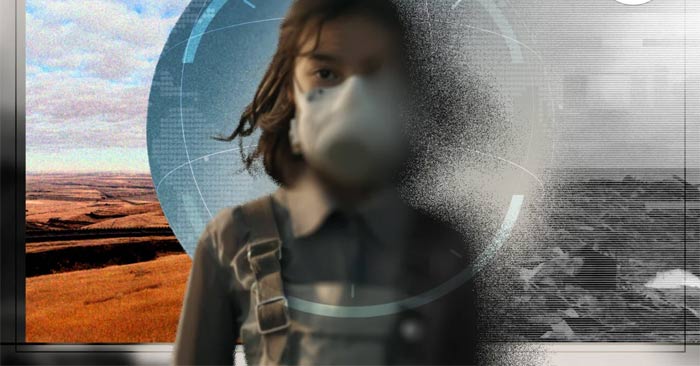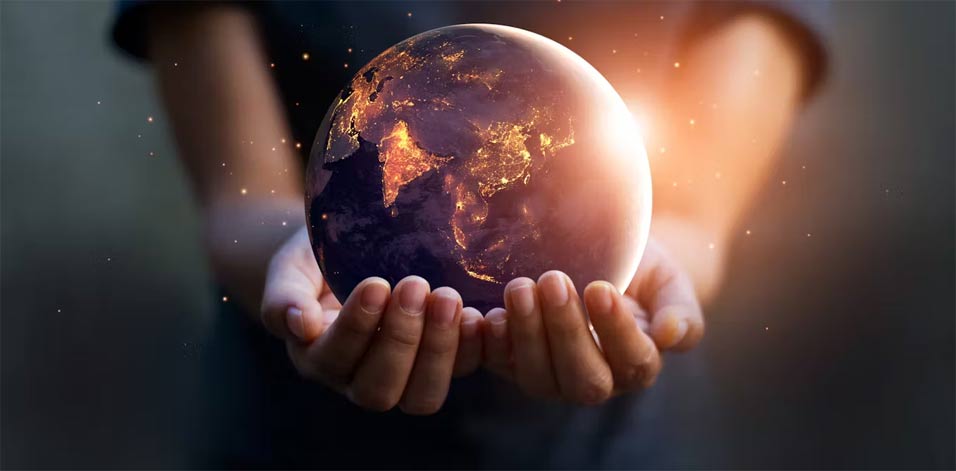Is climate change really a threat to human life?
The constant bad news about rising global temperatures and their impacts can make us feel like the world is coming to an end. Is it?

If a 60-mile (100-kilometer) wide asteroid were to hit Earth tomorrow, it would render the planet uninhabitable for all but the most hardy of extremophiles. This mass extinction event would wipe humanity off the face of the Earth or leave no survivors.
For some experts, this is the true definition of an ' existential threat .' Traditionalists would say the term describes a risk that threatens the existence of something—in this case, humanity. In recent years, that definition has been largely loosened to include global warming. Scientists, politicians, and world leaders all describe the climate crisis as an existential threat to humanity. This human-caused phenomenon is already changing life as we know it on a planetary scale, but could it actually lead to human extinction? Some experts say it could, in the most dire of scenarios.
Weather forecast
Asia-Pacific countries have suffered an average of six natural disasters a year over the past three decades – about twice as many as developing countries in Latin America and the Caribbean and about three times as many as sub-Saharan Africa.
In 2022 alone, extreme weather events killed more than 7,500 people, affected more than 64 million people, and caused an estimated $57 billion in economic losses. Countries with high poverty rates are also the most vulnerable to natural disasters.
Biodiversity loss
The planet's biodiversity is threatened by habitat loss, pollution, overexploitation and invasive species, which are all linked to factors causing climate change.
Since 1970, the Asia-Pacific region has seen the world's third-largest biodiversity loss, after Latin America and Africa. Such ecological and environmental pressures pose increasing risks to the hundreds of millions of people in the region who depend on forests for their health and livelihoods.

Epidemic
Climate change is creating new health challenges. Changing temperatures and weather patterns increase the risk of infectious diseases, including pandemics, while biodiversity loss and pressure on nature can lead to outbreaks of diseases that jump from animals to humans.
The risk of a major pandemic like COVID-19 occurring in the next 25 years has risen to 50% and continues to rise each year. With its high population density and connectivity to the rest of the world, the Asia-Pacific region is at the heart of these challenges.
Rising sea levels
Much of the Asia-Pacific economy depends on its coastlines, with key industries such as tourism, fishing and commerce concentrated in coastal areas. Asia-Pacific is home to 70% of the global population vulnerable to rising sea levels, and about a third of all employment is in sectors that rely on climate-affected natural resources, such as agriculture and fisheries.
The region is home to six of the world's largest coastal megacities, including Tokyo and Mumbai. Economic dependence on these coastal areas increases the potential impact of coastal hazards on the region's economy and livelihoods.

Climate Migration
In 2022, natural disasters displaced 32.6 million people worldwide, 41% higher than the 10-year average. The majority were due to weather-related hazards, with Asia-Pacific accounting for 70% of the total. Climate-related migration is widespread in Asia- Pacific . Climate-related disasters threaten the most vulnerable, disrupting livelihoods, endangering health, and reducing employment opportunities and social capital.
In short, stepped-up action on climate change is urgently needed so that we can give future generations a future they deserve.
You should read it
- Acid in the Arctic Ocean increases rapidly with climate change
- Global warming is killing intestinal bacteria in lizards
- Climate change is causing the sea to flow faster, scientists are still confused about what the harm will be
- AI- Solution to combat global climate change
- Climate change puts bees at risk of extinction, but it's not too late for humanity to save them and save themselves
- Look for evidence of climate change in Antarctica with an iPhone
 27 million tons of nanoplastic particles discovered in the North Atlantic
27 million tons of nanoplastic particles discovered in the North Atlantic These fruit trees can turn CO₂ into rock
These fruit trees can turn CO₂ into rock Animals That Could Reshape Earth's Waterways
Animals That Could Reshape Earth's Waterways New research shows fish are smarter than we thought
New research shows fish are smarter than we thought How dangerous is the toxic substance in the poison ivy that can kill people in a short time?
How dangerous is the toxic substance in the poison ivy that can kill people in a short time? What is the Strait of Hormuz and why is it important?
What is the Strait of Hormuz and why is it important?